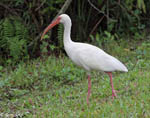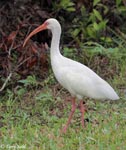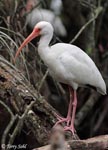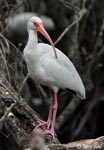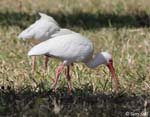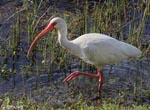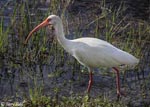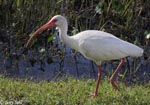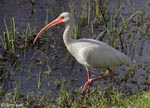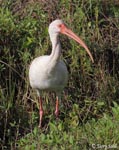White Ibis
Eudocimus albus
| Length: 24 inches | Wingspan: 38 inches | Seasonality: Rare Visitor |
| ID Keys: All white plumage, long reddish decurved bill, reddish legs. | ||
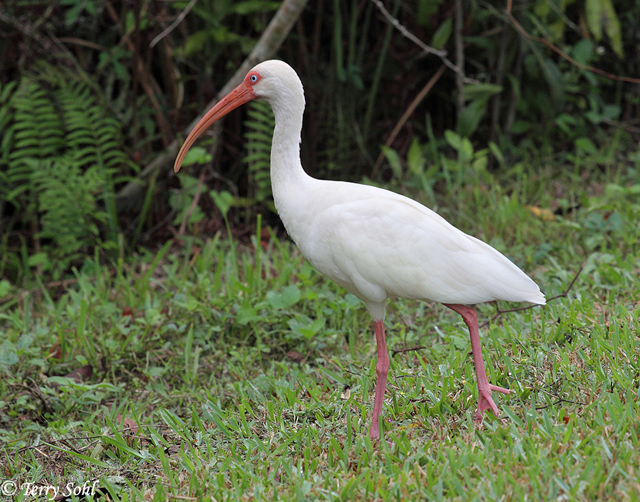 The mature White Ibis is
easily distinguished from other Ibis, thanks to its stark all-white
plumage. Generally a bird found near the coastlines in the Southeastern
United States, strays do occasionally wander well north of the normal breeding
range. It remains an extremely rare visitor to South Dakota,
however. While they often feed in wetland environments, they also often
will forage on manicured lawns in the Southeast, searching for large insects.
The mature White Ibis is
easily distinguished from other Ibis, thanks to its stark all-white
plumage. Generally a bird found near the coastlines in the Southeastern
United States, strays do occasionally wander well north of the normal breeding
range. It remains an extremely rare visitor to South Dakota,
however. While they often feed in wetland environments, they also often
will forage on manicured lawns in the Southeast, searching for large insects.
Habitat: Uses nearly any shallow water habitat, both freshwater and saltwater. Generally found near the Gulf and Eastern U.S. coasts, however.
Diet: Eats large numbers of crustaceans, including crabs in salt water and crawfish in fresh water. They also feed heavily on fish, frogs, snails, and insects. They will also sometimes eat other small vertebrates like snakes or small rodents.
Behavior: Forages both in the water and on land. In shallow water, wades slowly, probing with its bill in the mud below the water, or by sweeping its bill from side to side, grabbing food when it is felt with the bill.
Nesting: Non-breeder in South Dakota. In breeding range, White Ibis are colonial nesters, with nesting colonies often including other wading bird species as well. The nest is a platform of sticks, placed relatively low in a tree or thicket (between 3 and 15 feet off the ground). The female usually lays 2 or 3 eggs, and both parents help to incubate them. When the eggs hatch, both parents feed the young by regurgitating prey. The young usually fledge at around 6 weeks.
Song: Hunk-hunk-hunk by male during courtship.
Migration: Generally a permanent resident throughout its range, but some of the more northerly birds do move south in the fall. Strays do occasionally move well inland during the breeding season.
Interactive eBird map: Click here to access an interactive eBird map of White Ibis sightings
Similar Species: Juveniles are similar to Glossy Ibis and White-faced Ibis.
Conservation Status: Overall range is increasing, but local populations have suffered a dramatic decline, especially in Florida. The IUCN lists the White Ibis as a species of "Least Concern".
Further Information: 1) USGS Patuxent Bird Identification InfoCenter, White Ibis
Photo Information: December 10th, 2012 - Everglades National Park in Florida - Terry Sohl
| Click on the map below for a higher-resolution view |
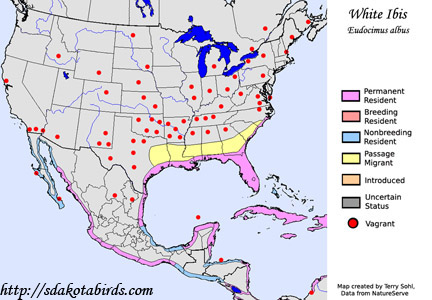 |
| South Dakota Status: Very rare visitor, with only a handful of records in the state. |
Additional White Ibis Photos
Click for a higher-resolution version of these photos
